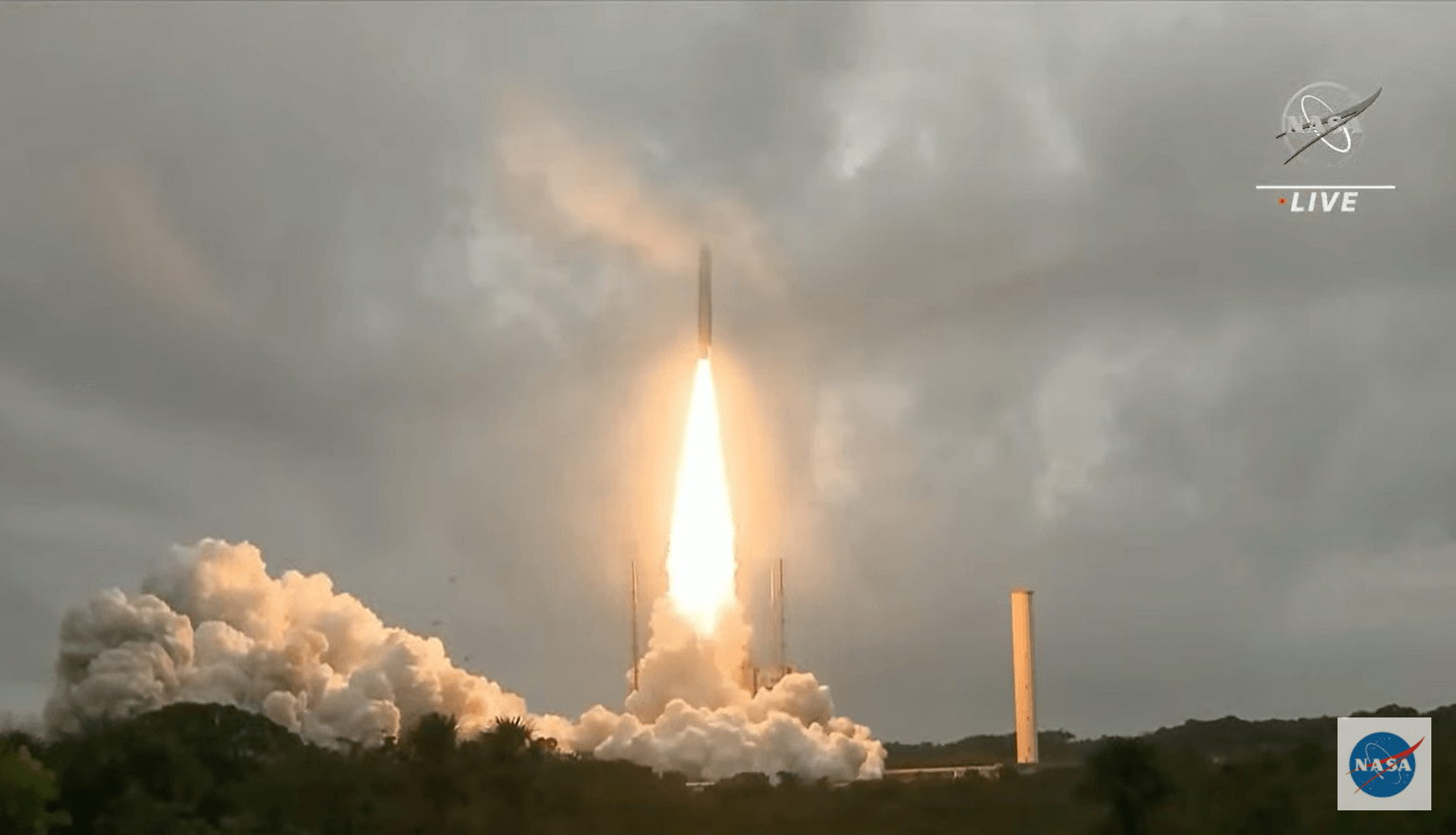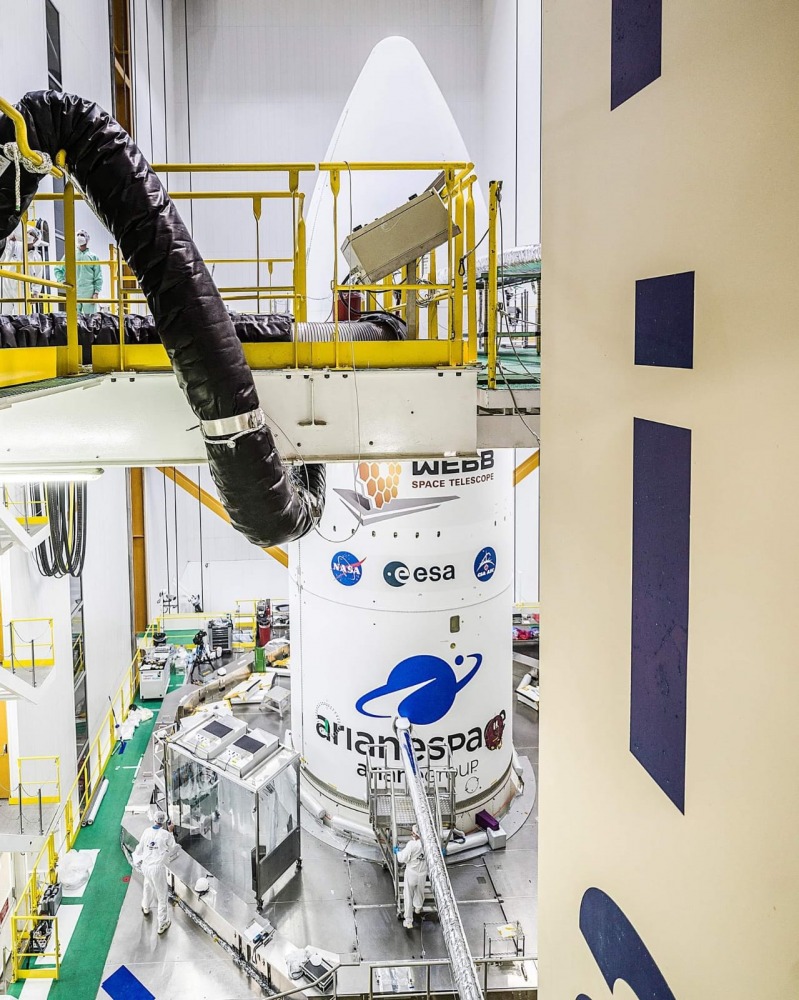Prof. Omri Vandel from the Rakah Institute of Physics at the Hebrew University writes in preparation for the launch of the James Webb Space Telescope about the discoveries that the new telescope will make possible
14:23 The launch took place as planned - and so far NASA reports that everything is going smoothly.
14:39 The Ariane 5 launcher with the James Webb space telescope on it left the atmosphere. The launcher will place the telescope in a (relatively) low orbit and then, it will gradually climb to the Lagrange point at a distance of 1.5 million km from Earth.

Original news
Today, Saturday, December 25.12.21, 14 at 20:XNUMX p.m. (Israel time), the James Webb Space Telescope will be launched, the continuation of Hubble telescope And a new generation of space telescopes, designed to provide answers to the most intriguing questions in astronomy and astrophysics - the formation of the first galaxies, the birth of stars, the study of the properties of planets in distant solar systems and whether they have life.
More and more we hear about the race to land a man on Mars, and in the near future NASA is planning a return of astronauts to the moon (Artemis program). However, in a few days an unmanned launch is planned, which arouses great excitement among astronomers. According to most scientists, humanity's greatest achievements in the field of space are not the conquest of space and manned space missions, but the exploration of the universe, done by satellite telescopes Like the space telescope Hubble The observer of the universe for thirty years in visible light, Spitzer in infrared light, Chandra X-rays, Plank in microwave radiation, Kepler to the discovery of extraterrestrial planets and many more, each of which brought about a revolution in our understanding of the universe.

On December 25, 2021, the launch of the "heir to the throne", the space telescope named after James Webb - James Webb Space Telescope, the successor of the space telescope Hubble. Unlike its predecessor, which orbits the Earth at an altitude of about 600 km, James Webb will be placed at a distance of 1.5 million km, four times the distance to the Moon, in a place called "Lagrange point L2". Its mirror diameter is 6.5 meters, almost 3 times that of Hubble, and its light-gathering capacity will be 7 times greater. Furthermore, its instrumentation is much more advanced than that of Hubble Hubble. These features will enable unprecedented observations that have so far been beyond the reach of humanity, such as the first stars and the earliest galaxies that were formed a relatively short time (about half a billion years) after the big bang and a careful examination of the atmospheres of exoplanets, to try and discover gases that may indicate the development of life, such as water vapor, oxygen and methane. James Webb's remote location isolates it from the radiation emitted by the Earth and improves its sensitivity, but on the other hand makes it inaccessible to manned repair and maintenance missions, as it was Hubble, to which five such missions were sent. Therefore James Webb's systems, which are much more complex than those of Hubble, must be fault-tolerant. The launch of James Webb was postponed many times, and the budget also swelled to about 10 billion dollars.
The reason space agencies like NASA and the European Space Agency invest huge capital to send telescopes into Earth orbit is that telescopes built on Earth are limited by the atmosphere. Although the atmosphere is apparently transparent to visible light, the light rays are affected and deflected during transit, and the air currents cause the starlight to flicker. Due to this phenomenon, a long exposure photograph cannot achieve high sharpness (resolution). This is the reason why the observatories are built, if possible, on high mountain tops - that way there are less layers of air above them. The images of the space telescope Hubble Sharper than images from much larger telescopes placed on Earth. In addition, visible light is only one of the types of radiation emitted by stars and galaxies - other types of radiation, such as ultraviolet (UV, X-rays and gamma rays) are absorbed (fortunately) by the atmosphere, so in order to observe them we must send the telescopes designed to receive them beyond the atmosphere.
The space telescope Hubble, which was launched in 1990, was named after the American astronomer Edwin Hubble, who discovered (about ninety years ago) that the universe is expanding, A discovery which caused Einstein to change the equations of relativity. The Hubble telescope, which has been operating for 30 years, has achieved amazing images and results, far beyond any other telescope built by man, on Earth or in space. It has a mirror with a diameter of 2.4 m, and is capable of absorbing visible and infrared light (IR. His most notable achievements were the discovery of the acceleration of the universe and dark energy, for which he was awarded the Nobel Prize in 2011, the measurement of the age of the universe, the evolution of galaxies, the discovery of planets in other solar systems and the measurement The composition of their atmospheres, massive black holes in the centers of galaxies, collisions of galaxies, the formation and death of stars, the collision of a comet with the planet Jupiter and more.
telescope Hubble He brought us some of the most beautiful and special images of the universe in visible light, but as mentioned there are other, very different types of radiation, which we are not at all able to see from the surface of the earth, since the atmosphere absorbs them at high altitude. To get a complete picture of the universe, it is important to study it also using these types of radiation. To this end, dedicated telescopes capable of distinguishing the other types of radiation were built, and sent to orbits around the Earth, such as Hubble, or even to much more distant orbits. Several examples are ultraviolet light telescopes, such as IUE and the planned Israeli telescope (in collaboration with other countries), Ultrasat X-ray telescopes such as ROSAT, XTE and Chandra, and gamma-ray telescopes such as Compton, INTEGRAL and Fermi.
Two other families of satellite telescopes were designated for the study of the cosmic background radiation and the discovery of extraterrestrial planets. The cosmic background radiation that was discovered in 1965 and earned its discoverer a Nobel Prize is actually the most convincing proof of the Big Bang theory, which says that the universe was created about 14 billion years ago in a massive explosion and has continued to expand ever since. However, most of this radiation is concentrated in microwaves, which do not penetrate through the atmosphere and therefore must be studied with satellite telescopes. Three such telescopes were launched in 1990-2010, COBE, WMax and Plank, and revolutionized our understanding of the universe and its properties.
The other family is satellite telescopes designed to age exoplanets orbiting other suns. In these worlds life and even cultures may exist. The most famous of them are the Kepler telescope, which was launched in 2009 and within five years discovered over 4000 exoplanets, 10 times more than was known before it, and its successor TESS, which was launched in 2018 and continues the mission.
Today, man has reached a profound understanding of the universe, thanks to the telescopes that were sent into space following that Sputnik, and stands on the threshold of an equally fascinating period, in which Perhaps the satellite telescope, more sophisticated than all its predecessors, will lead to more discoveries, first of all the answer to the question of whether there is life outside the earth.
The author is Prof. Omri Vandel from the Rakah Institute of Physics at the university.
More of the topic in Hayadan:

6 תגובות
At such a distance it is impossible to fix anything, the slightest glitch and this whole project went down the drain. I remember that the Hubble was fixed several times.
How petty?
There they sent a telescope to a distance of 1.5 million km and here they are unable to write a title without a spelling error (the Hebrew University).
The news appeared in its first version including the reference to Zoom at 13:00
There is no fundamental difference between an observer who is on Earth and looks at the universe, and an observer who is in a telescope orbiting the Earth and looks at the universe.
Both observers are in motion, and they do not see the true picture of the universe.
The true picture of the universe will be seen by an observer who is completely at rest, but such an observer does not exist in reality.
The real picture of the universe can only be seen in the imagination, and in this picture the stars move in spiral orbits.
Moving observers will never see spiral orbits, even though these are the true paths of the stars.
A. Asbar
It's nice that this news was uploaded just in time so that everyone could miss the Zoom lecture.